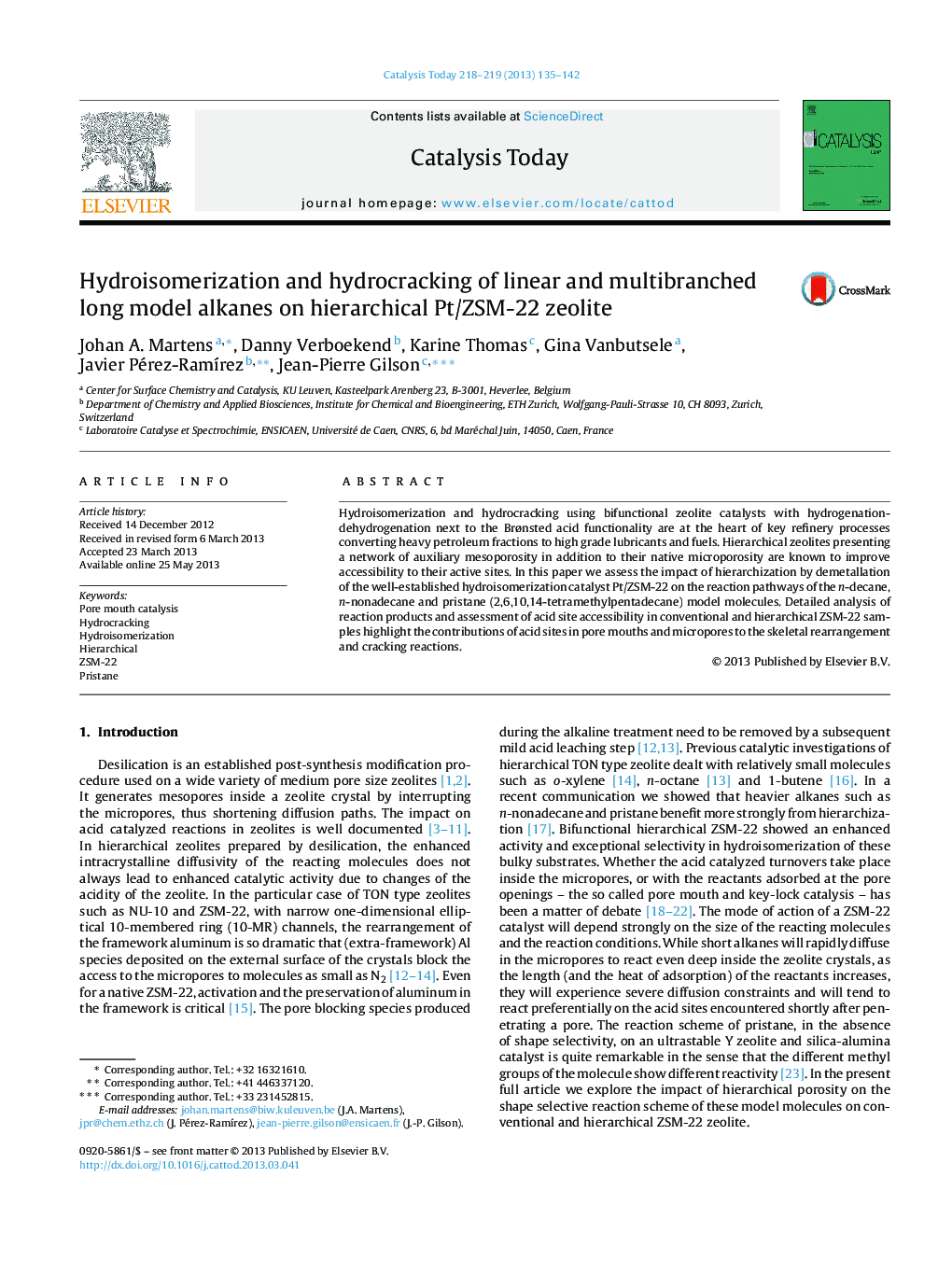| Article ID | Journal | Published Year | Pages | File Type |
|---|---|---|---|---|
| 54760 | Catalysis Today | 2013 | 8 Pages |
•Hierarchization of ZSM-22 favors hydroisomerization and limits hydrocracking•Hierarchical ZSM-22 has lower acidity in micropores and higher acidity in pore mouths•Branching occurs in pore mouths; hydrocracking in pore mouths and micropores•Hierarchization is a unique tool to design superior hydroisomerization catalysts•Pristane is a convenient model molecule for probing pore mouth catalysis
Hydroisomerization and hydrocracking using bifunctional zeolite catalysts with hydrogenation-dehydrogenation next to the Brønsted acid functionality are at the heart of key refinery processes converting heavy petroleum fractions to high grade lubricants and fuels. Hierarchical zeolites presenting a network of auxiliary mesoporosity in addition to their native microporosity are known to improve accessibility to their active sites. In this paper we assess the impact of hierarchization by demetallation of the well-established hydroisomerization catalyst Pt/ZSM-22 on the reaction pathways of the n-decane, n-nonadecane and pristane (2,6,10,14-tetramethylpentadecane) model molecules. Detailed analysis of reaction products and assessment of acid site accessibility in conventional and hierarchical ZSM-22 samples highlight the contributions of acid sites in pore mouths and micropores to the skeletal rearrangement and cracking reactions.
Graphical abstractFigure optionsDownload full-size imageDownload high-quality image (186 K)Download as PowerPoint slide
